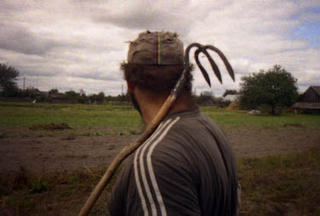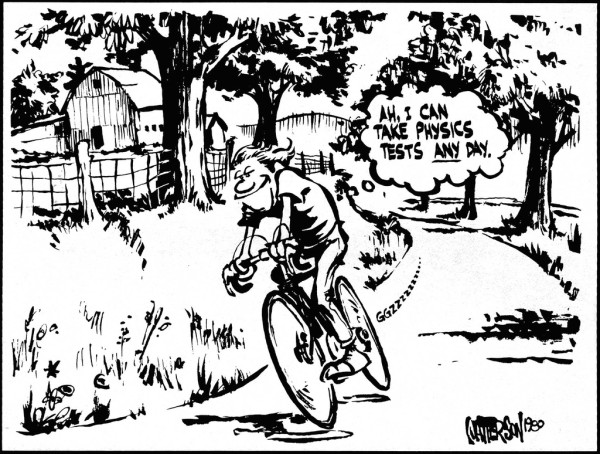Labor Day story: San Mateo Hero...
Unsung heroes':San Mateo dispatchers awarded for response
By Dana Yates
 |
| San Mateo police Dispatcher Bill Bleich fields calls at the department’s dispatch center. The 18-year-veteran was one of three San Mateo dispatchers who recently received a county award for the way they handled a deadly incident on Hobart Avenue last year. |
“I heard the mom saying ‘it’ll be done soon,’” said San Mateo police Dispatcher Bill Bleich.
The call started a string of events that ultimately ended in an officer-involved shooting, a heroic rescue of children and the death of a desperate mother at the hands of a deranged stalker. What happened between the first 911 call from 24-year-old Loan Kim Nguyen and the final flurry of gunfire from Raymond Gee that took both their lives was in the hands of three San Mateo dispatchers. For their level-headed management of the adrenaline-fueled situation, Supervisor Rita Thibodeau and dispatchers Dave Barton and Bleich were recently awarded the 2008 San Mateo County Center of Excellence Award by other county dispatchers.
“They’re really the unsung heroes of the department and really the lifeline to the community,” said Deputy Chief Mike Callagy.
The three dispatchers working on Nov. 28 received the first wireless 911 call from Nguyen. They could hear children crying and a mom’s voice, but little more than that. Tracking devices located the cell phone tower from which the call was transmitted, allowing them to dispatch an officer to the general area. The officer was dispatched to the area of 13th Avenue between Palm Avenue and El Camino Real, Bleich said.
The officer was in a neighborhood with homes, multi-story businesses and one large apartment complex. Finding a victim with such limited information was nearly impossible.
Thibodeau heard her co-workers needed help and immediately moved from her nearby office to the dispatch desk. As Thibodeau was contacting the cell phone provider to learn the identity of the cell phone owner, another 911 call came into the dispatch center.
It was a man claiming his wife needed help. The address he gave them was close to the cell phone tower from which the previous 911 call came, Thibodeau said.
Dispatchers asked a very important question: What is your wife’s cell phone number?
That question led dispatchers to link the two calls and immediately send an officer who was already in the area to the couple’s Hobart Avenue home.
What happened after that seemed to happen over the course of 15 minutes, Thibodeau said.
In reality, it was a long and scary event that included shots being fired at officers and a standoff requiring the San Mateo County SWAT Team. The team of dispatchers managed a situation all the while worried that one of the 20 other police personnel on duty that day could have been shot and possibly killed.
Managing the situation went far beyond dispatching an officer and waiting for a response.
Thibodeau went as far as instructing the staff of a nearby day care center to shelter in place while the SWAT Team was across the street. The instructions included exactly where in the house to stand and how to respond in the event of gunfire, said Lt. Mike Brunicardi.
“They’re just outstanding. I wouldn’t want anyone else here,” Brunicardi said.
Time to sink in
For dispatchers, there is seldom closure. Most of the time they never know what happened on any given call. This time they did — by way of their co-workers and the press.
“Sometimes it takes a while to sink in. It sunk in a little when I went home for lunch. It really sunk in when I saw the press [reports],” Bleich said.
What happened that day was well documented.
Gee laid in wait on the side of the home Nguyen shared with her husband Dennis Quan. Nguyen called her husband after he left for work that morning reporting that the power had gone off. Quan returned home and switched the power back on, noticing that the garage door was partially open.
Police believe Gee gained entry into the home by switching off power to the house and opening the garage door. His fingerprints were identified on the power box on the side of the house.
He brought with him a bag that included a knife, handcuffs, pepper spray and prescription muscle relaxants.
Gee met Nguyen at a Halloween party and obtained her cell phone number by allowing her to use his phone to call hers when she lost it at the party. He also tracked her on Facebook.
Gee opened fire when police responded to the house. The SWAT Team was called in and a standoff occurred. Fearing for her life and the safety of her children, Nguyen told police she was going to lower her children out of a bedroom window to a SWAT vehicle below. As she was doing so, Gee opened fire through a bedroom wall, striking Nguyen and narrowly missing officers. Gee was later found dead of self-inflicted gunshot wounds.
‘Unique profession’
For Bleich, the call stands out as the worst call in his career. For Thibodeau, it is another in a long history of interesting calls.
Calls that involve small children, sometimes calling in domestic violence, affects Thibodeau and Dispatcher Briana Coons the most.
It was Coons’ second day on the job when the Hobart incident was called into 911. She was at City Hall, but immediately returned to the department to do what she could to help. A part-time City Hall dispatcher also arrived at the Police Department to help field the many phone calls flooding the dispatch center that day, Thibodeau said.
Coons was undergoing a rigorous introduction to the department, which includes six months of on-the-job training — three answering phone calls and three dispatching officers.
“It’s a unique profession unlike any other. There are no classes for this. There are no criminal justice courses to take to learn how to be a dispatcher,” Callagy said.
San Mateo dispatchers work 10-hour shifts and cannot leave their station unless specifically scheduled to do so. It’s a multi-tasking job. Most of the day is spent prioritizing calls and referring people to other organizations for help. Sometimes dispatchers are faced with a major incident. Sometimes it’s a call of a deer head on someone’s doorstep or the “Beebusters” employee climbing trees at night to extract hives.
“Sometimes I think people think it’s all about Code 3, lights and sirens, all the time, all day. We usually spend the day giving a lot of referrals to other agencies,” Thibodeau said.
It also takes its toll on people. Those who don’t make it past the first six months are usually shocked by the strange hours. Thibodeau said a strong support system is necessary to get through the schedule of odd hours.
“Someone has to be here 24/7. Someone has to be here on Christmas. Someone has to be here on New Year’s Eve. Someone has to be here on their anniversary” Thibodeau said.
And then there’s the name calling. For the most part, the dispatchers seem to easily brush off insults from stressed out callers.
“They’re not calling on the best day of their life. I’m OK with that,” Thibodeau said.
Considering their daily duties are often unrecognized by the public, who generally thank the officers who actually respond to an emergency, the dispatchers were happy to accept for the first time the county award from their peers.
“In the public eye we’re kind of anonymous,” Thibodeau said.






















